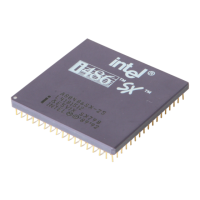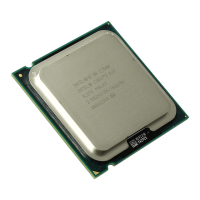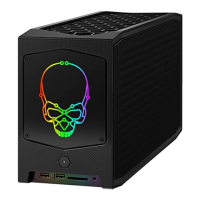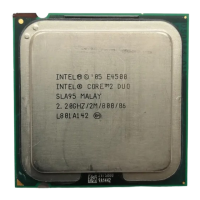7-43
PERIPHERAL SUBSYSTEM
These similarities between the Intel486 processor and the 82596 coprocessor simplify bus arbi-
tration when the processor and the coprocessor are the only two bus masters on the processor bus.
The HOLD and HLDA signals can be used for handshake arbitration and BREQ from the proces-
sor can trigger the coprocessor’s bus throttle timers when needed, as shown in Figure 7-23.
Network (Serial) Interface
TxD
†
O Transmit data
TxC#
†
O Transmit clock
LPBK# O Loopback
RxD I Receive data
RxC# I Receive clock
RTS# O Request to send
CTS# I Clear to send
CRS# I Carrier sense
CDT# I Collision detect
Table 7-12. 82596 Signals (Sheet 2 of 2)
Signal Type Description
†
Signals marked with a dagger are not included on, or operate differently than, the Intel486™ processor
bus.

